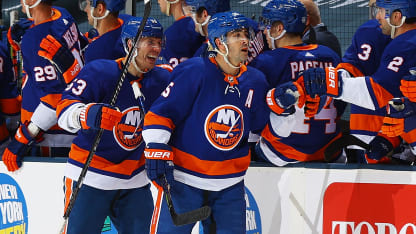The Coaches Room is a regular feature throughout the 2023-24 season by former NHL coaches and assistants who turn their critical gaze to the game and explain it through the lens of a teacher. Mike Kelly, John Hynes and Dallas Eakins will take turns providing insight.
In this edition, Kelly, a former assistant with the New York Rangers, Vegas Golden Knights, Florida Panthers and Vancouver Canucks, looks at the importance of developing the identity of the bottom-six forwards and third defense pairs early in a season.
The top forwards and defensemen usually get most of the attention on a team, but the depth players often turn out to be your identity guys. When I say depth, I'm talking more about the third and fourth lines and fifth and sixth defensemen. They are usually a key factor with successful teams.
I remember talking to a coach one time and he said, "If you really want to find out a team's systems, watch its third and fourth lines in the first period because they're the ones that stick to it."
We talk about chemistry on the top lines, but it's valuable for the depth players, too. They need to know who they are and how to best work together so they can make a meaningful contribution. Coaches work as hard with those guys as they do with the top guys because they understand the benefit of having them.
When we coached the Vegas Golden Knights, we had William Carrier, Pierre-Edouard Bellemare and Ryan Reaves on the fourth line. That line had a real identity. Each player brought a different element, but they had terrific chemistry because they worked very hard at their game. They watched their shifts every morning after a game, and they spent time together working on how to best contribute to the team.
Those guys were invaluable to us. In the 2018 Stanley Cup Playoffs, Reaves scored the winning goal against the Winnipeg Jets in Game 5 of the Western Conference Final to help us win that series.
The roles of third and fourth lines can vary a little. Everyone would be happy if their depth forwards and defensemen could play effectively against top lines from time to time. It is also expected that some of these players to kill penalties and or defend a lead in the last minute of games as well. They don't get top minutes, but they get important ones.
Top teams have established depth players who have a clear understanding of their role and what their line can bring. If their top guys are not having a great night, the depth players often step up and chip in, making them feel good about themselves and their contribution. This can go a long way in team building as well. Then confidence builds and it can snowball.
The New York Islanders' fourth line (many have considered it their third line) of Matt Martin, Casey Cizikas and Cal Clutterbuck has played together for a long time. They have great chemistry and are important to the identity of that team. Every team would like to have that, but they don't all have the luxury of having guys who have played together for so many years, so coaches need to find the right combination of guys that work together well and can do it consistently. If they are returning players, you have a pretty good idea of what to expect from them and coaches can help them get to where they need to get to based on their history.
You might be a little bit more patient with those guys, but if you're dealing with players who you don't know, it's a little bit more trial and error searching for those right combinations. Either way, patience is required to find the right fit and get these players playing their game.
That is the challenge for a coach because you don't have the luxury of time to allow chemistry to develop because, in a highly competitive league, you need wins. The sooner they can find it in the season, the better it is for everybody.


















